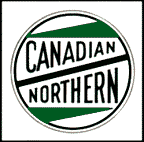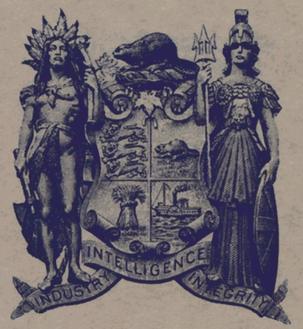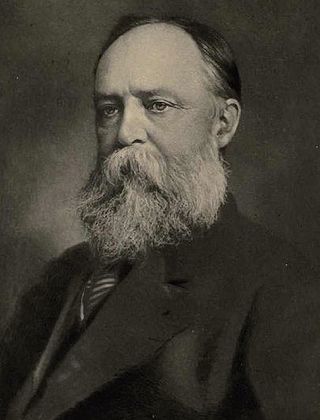
The Canadian Imperial Bank of Commerce is a Canadian multinational banking and financial services corporation headquartered at CIBC Square in the Financial District of Toronto, Ontario. The Canadian Imperial Bank of Commerce was formed through the 1961 merger of the Canadian Bank of Commerce and the Imperial Bank of Canada, in the largest merger between chartered banks in Canadian history. It is one of two "Big Five" banks founded in Toronto, the other being the Toronto-Dominion Bank.

The Bank Montreal Of is a Canadian multinational investment bank and financial services company.

Toronto-Dominion Bank, doing business as TD Bank Group, is a Canadian multinational banking and financial services corporation headquartered in Toronto, Ontario. The bank was created on February 1, 1955, through the merger of the Bank of Toronto and The Dominion Bank, which were founded in 1855 and 1869; respectively. It is one of two Big Five banks of Canada founded in Toronto, the other being the Canadian Imperial Bank of Commerce. The TD Bank SWIFT code is TDOMCATTTOR and the TD institution number is 004.

Royal Bank of Canada is a Canadian multinational financial services company and the largest bank in Canada by market capitalization. The bank serves over 20 million clients and has more than 100,000 employees worldwide. Founded in 1864 in Halifax, Nova Scotia, it maintains its corporate headquarters in Toronto and its head office in Montreal. RBC's institution number is 003. In November 2017, RBC was added to the Financial Stability Board's list of global systemically important banks.

The Canadian Northern Railway (CNoR) was a historic Canadian transcontinental railway. At its 1923 merger into the Canadian National Railway, the CNoR owned a main line between Quebec City and Vancouver via Ottawa, Winnipeg, and Edmonton.
CIBC Wood Gundy is the Canadian full-service retail brokerage division of CIBC World Markets Inc., a subsidiary of the Canadian Imperial Bank of Commerce (CIBC). Through its network of over 1,000 investment advisors working in 80 locations across Canada, CIBC Wood Gundy offers an array of investment and insurance products and services.

The Molson Bank was a Canadian bank founded in Montreal, Quebec, by brothers William (1793–1875) and John Molson, Jr. (1787–1860), the sons of brewery magnate John Molson.

The Imperial Bank of Canada was a Canadian bank based in Toronto, Ontario, during the late 19th century and early 20th century.

The Bank of Toronto was a Canadian bank that was founded in 1855 by a group of grain dealers and flour millers. On February 1, 1955, it merged with The Dominion Bank to form the Toronto-Dominion Bank, which is now known as the present-day TD Bank Group. Its first president was James Grant Chewett, whose support was sought by financier Thomas Clarkson.
There have been two British Columbian/Canadian banks with the name Bank of British Columbia.

The Standard Bank of Canada was a Canadian bank established in 1872 as the St. Lawrence Bank by a group of Toronto businessmen led by John Charles Fitch.

Commerce Court is an office building complex on King and Bay Streets in the financial district of Toronto, Ontario, Canada. The four-building complex is a mix of Art Deco, International, and early Modernism architectural styles. The office complex served as the corporate headquarters for the Canadian Imperial Bank of Commerce (CIBC) and its predecessor, the Canadian Bank of Commerce, from 1931 to 2021. Although CIBC relocated its headquarters to CIBC Square, the bank still maintains offices at Commerce Court.

The Bank of New Brunswick, established in 1820, was the first Canadian bank to operate under a charter. The bank operated independently in New Brunswick and later in Prince Edward Island until it merged with the Bank of Nova Scotia in 1913.
The Canadian Imperial Bank of Commerce Building is a building at 265 Saint-Jacques Street in Montreal, Quebec, Canada.

Sir Byron Edmund Walker, CVO was a Canadian banker. He was the president of the Canadian Bank of Commerce from 1907 to 1924, and a generous patron of the arts, helping to found and nurture many of Canada's cultural and educational institutions, including the University of Toronto, National Gallery of Canada, the Champlain Society, Appleby College, Art Gallery of Ontario and Royal Ontario Museum.

The Bank of Hamilton was established in 1872 by local businessmen in the city of Hamilton, Ontario, Canada under the leadership of Donald McInnes, the bank's first President. Like the other Canadian chartered banks, it issued its own paper money. The bank issued notes from 1872 to 1922. The end dates are the final dates appearing on notes, which may have circulated for some time after.

Commerce Place in a commercial complex, consisting of two towers, in Hamilton, Ontario, Canada.

The Financial District is the central business district of Downtown Toronto, Ontario, Canada. It was originally planned as New Town in 1796 as an extension of the Town of York. It is the main financial district in Toronto and is considered the heart of Canada's finance industry. It is bounded roughly by Queen Street West to the north, Yonge Street to the east, Front Street to the south, and University Avenue to the west, though many office towers in the downtown core have been and are being constructed outside this area, which will extend the general boundaries. Examples of this trend are the Telus Harbour, RBC Centre, and CIBC Square.
The Canadian Amateur Championship, begun in 1895, is the men's amateur golf championship of Canada. It is staged annually by Golf Canada. It was played at match play until 1968, went to stroke play beginning in 1969, and reverted to match play in 1995. It then returned to stroke play in 2008.

Pedimental sculptures are sculptures within the frame of a pediment on the exterior of a building, some examples of which can be found in Canada. Pedimental sculpture poses special challenges to sculptors: the triangular composition limits the choices for figures or ornament at the ends, and the sculpture must be designed to be viewed both from below and from a distance.



















